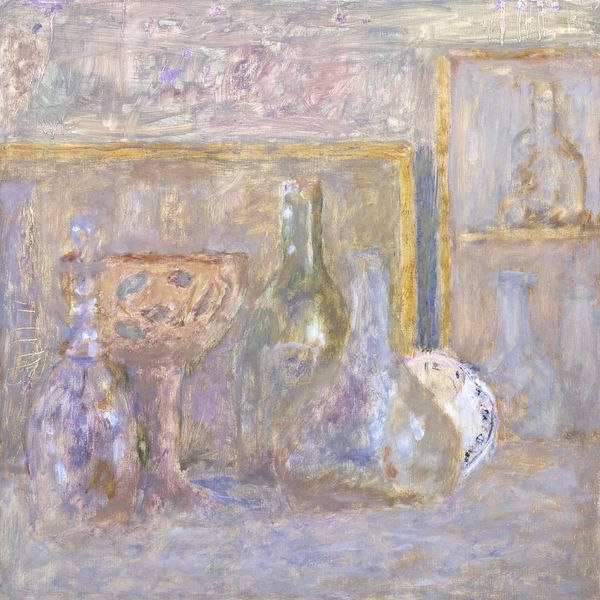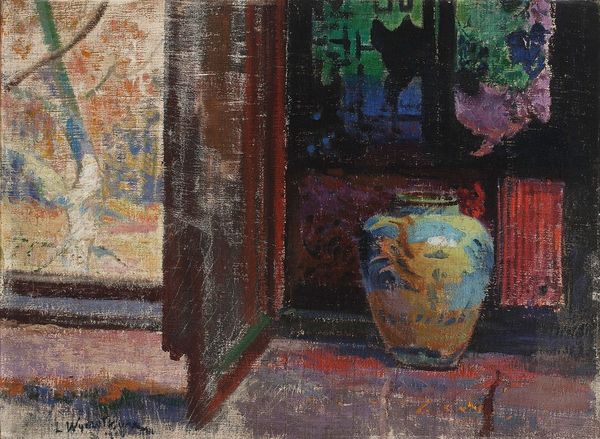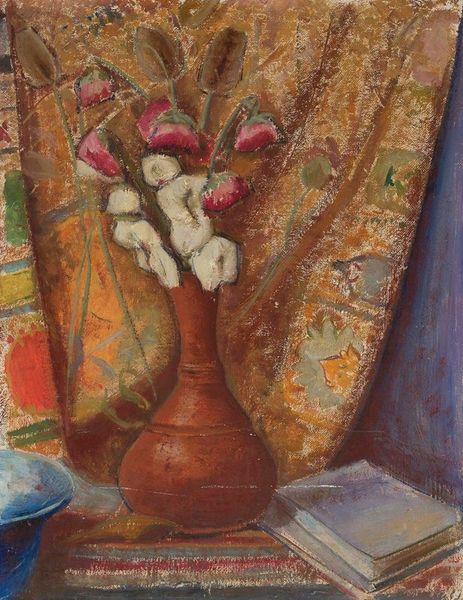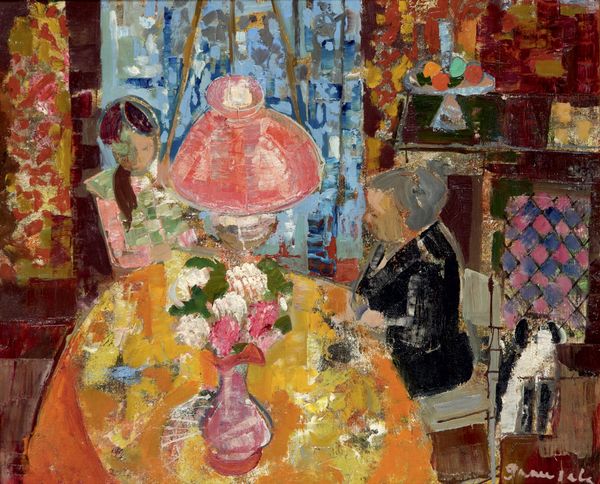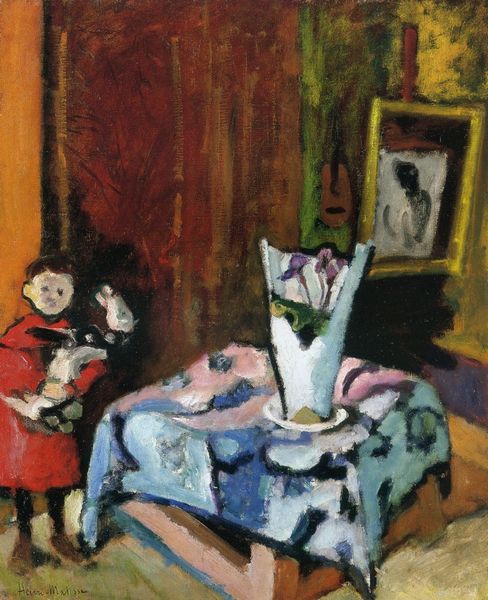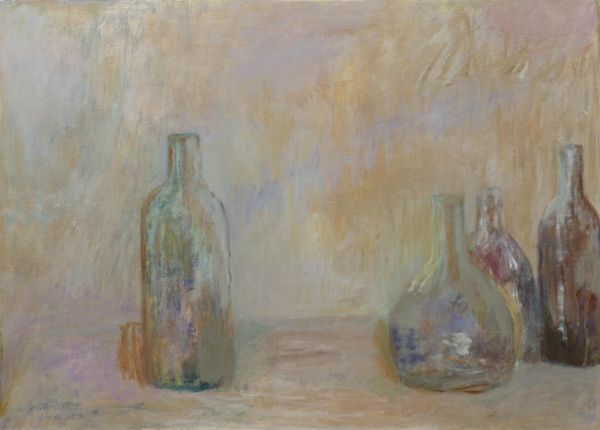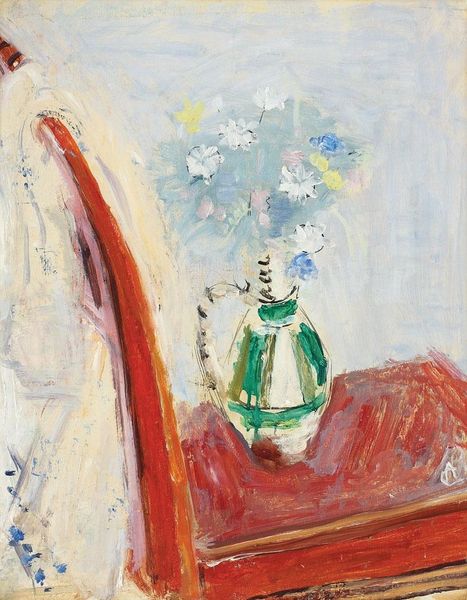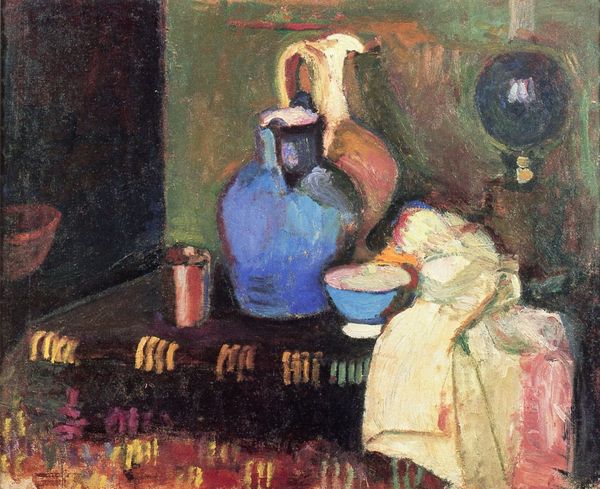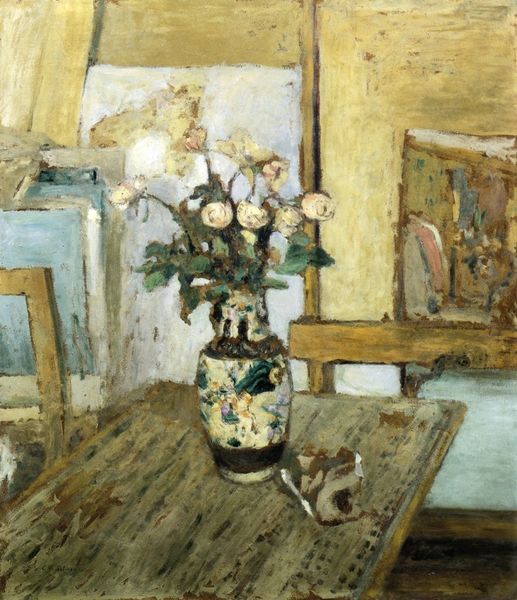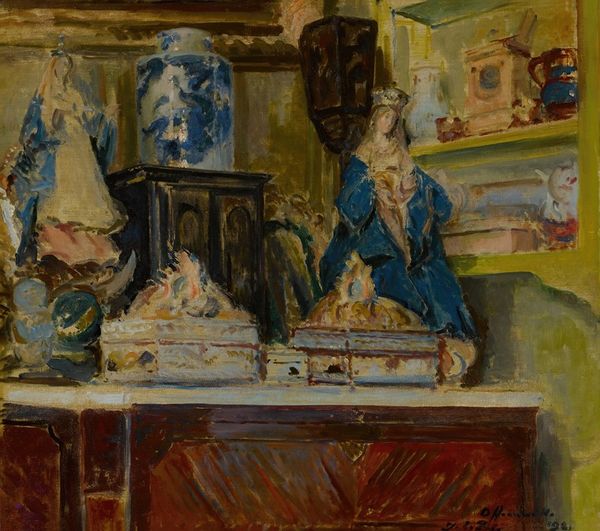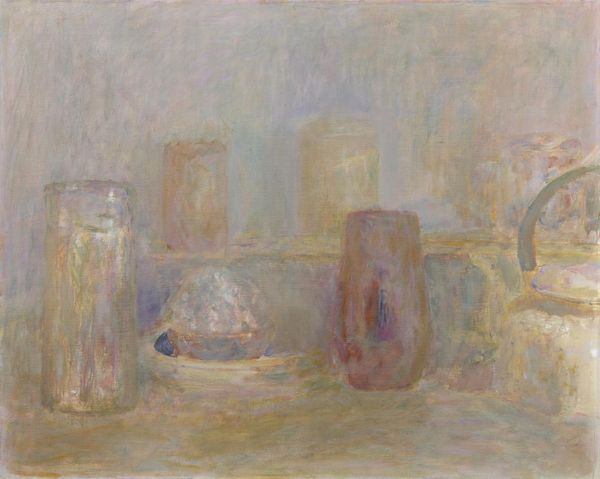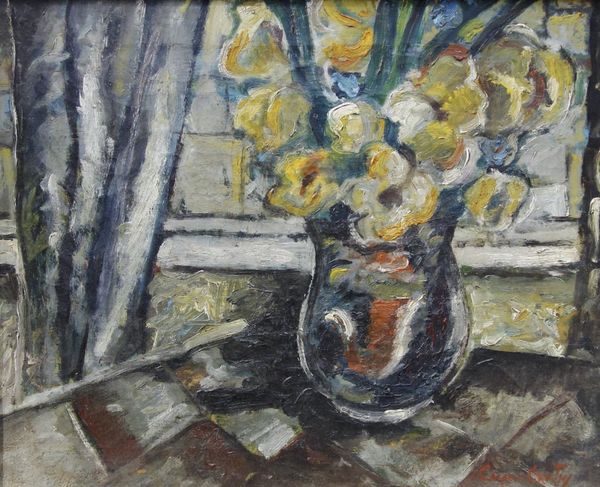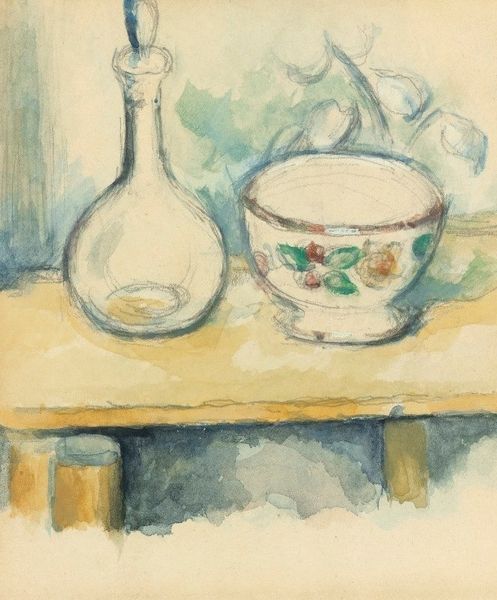
oil-paint
#
oil-paint
#
oil painting
#
painterly
#
modernism
#
realism
Copyright: Public Domain: Artvee
Curator: Walter Kurt Wiemken's "Still Life with Lemon and Grape," painted in 1929, offers a fascinating look at the modernist approach to the still life genre, executed in oil paint. Editor: My immediate impression is a sort of muted vibrancy. The colours are quite restrained, but the brushstrokes are lively, creating movement within this domestic space. It feels both intimate and a little… melancholic. Curator: It’s interesting that you perceive melancholy. The still life, traditionally, is laden with symbolic weight. Citrus fruits, for example, were common vanitas symbols alluding to mortality and transience, perhaps a reflection on post-war anxieties. Editor: Exactly, I see those anxieties mirrored in the loose, almost impatient brushwork. There's a tension between the traditional subject matter, evoking domestic comfort, and the unsettled feeling communicated through the painterly style. Even the way the objects crowd together feels symbolic. Curator: Observe the ceramic vessels alongside the organic forms. The repeated decorative motifs – abstracted leaves or floral patterns – suggest cycles and inherited aesthetics. This resonates with modernist ideas surrounding continuity and tradition in a rapidly changing world. The lamb figurine, too, adds a complex layer – evoking both innocence and potential sacrifice, an early Christain symbol which relates back to traditional belief. Editor: I agree. And how fascinating that it also could question concepts like tradition or heritage, because they are all arranged on a striped, vaguely classical-looking blue and white surface. This highlights the intersections of class, domesticity, and perhaps an underlying sense of displacement, something Wiemken likely grappled with given the social climate of his time. Curator: Indeed. Wiemken's work captures a specific historical and personal experience. His approach allows viewers to connect with that lived experience in a meaningful way. Editor: Ultimately, this "Still Life" invites us to reflect on our own relationships to material objects and how these things connect to history, society, and ourselves. The muted palette creates a stage, really, for viewers to activate.
Comments
No comments
Be the first to comment and join the conversation on the ultimate creative platform.
